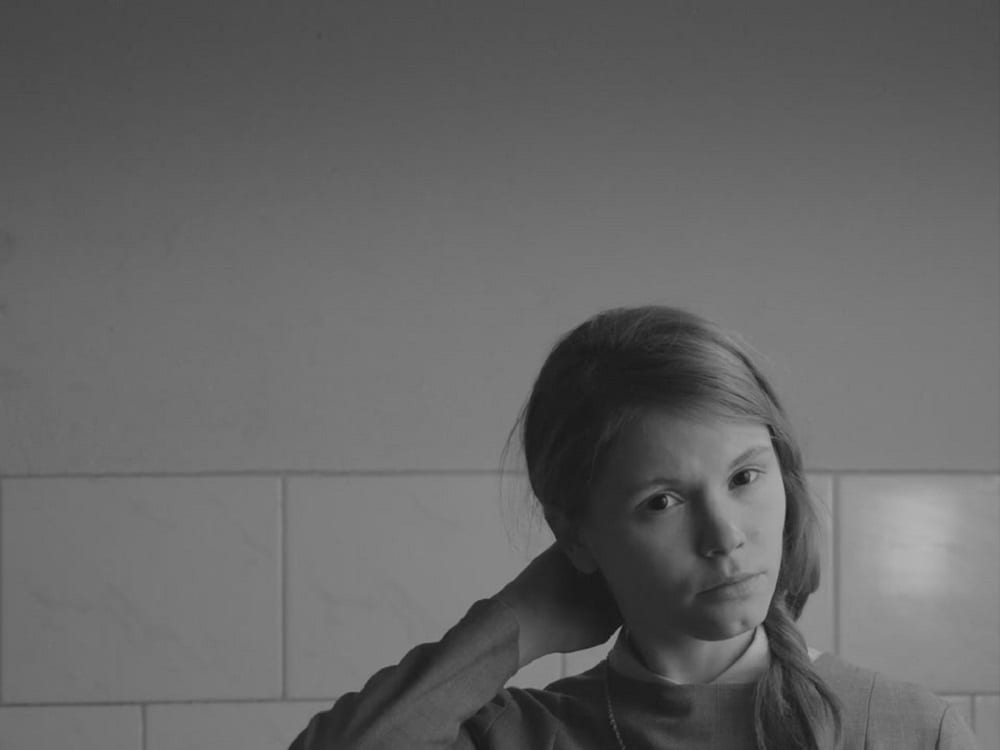Paweł Pawlikowski’s Ida (2013) features dichotomies that are not as starkly different as they seem. The film’s main characters are a contrastive aunt/niece pair. Wanda Gruz Agata Kulesza) and Anna/Ida (Agata Trzebuchowska) differ in the big things: lifestyles, religion, and personalities. In early 1960s Poland, Anna is a young novitiate, forced to visit her only remaining relative before completing her vows. The women are immediately compared when Anna arrives at Wanda’s apartment; they take long, silent seconds to size each other up. Anna enters and Wanda’s one-night stand leaves. Their introduction establishes stark differences between the two and gives the role of judge to Anna despite it being Wanda’s profession. Wanda,under Soviet rule, was a well-known communist prosecutor and sentenced Polish nationalists to death. During this visit, Anna learns her real name is Ida Lebenstein. She and her aunt come from a Jewish family. Her parents, and Wanda’s son, were hidden by a Christian family during the Nazi occupation of Poland, but a member of that same family later murdered the Lebensteins. After learning this news, Ida wants to find where they’re buried and so the two go on the road: a young, solemn, Christian nun and an older, promiscuous, alcoholic judge.
While following leads about their family’s suspected murder, the two women drive through Poland’s empty countryside and pick up a hitchhiking musician, Lis. The movie opens in near silence at the convent, with bare rustles of everyday activity as the only sounds. When Ida goes to see Wanda, the city’s bustling crowd introduces a bit more sound, but it isn’t until Wanda shares family pictures and stories with Ida that there is diegetic background music. Music is used to contrast Wanda and Ida. Throughout the film, music is associated with Wanda and her more casual lifestyle. Music plays in her apartment, in her car, and in her final, culminating moment. Also, Lis’s role is a seducer, using music to sway Ida’s conscience: to “know her effect” and give “usual life” a try. He invites them to see his jazz show while they’re in town, and although she goes, she isn’t tempted at first. For Ida is associated with quietness, which is reflected in her behavior: what she lacks in dialogue she makes up for it in facial expressions and the subtle flick of the eye. Surprisingly, as their trip progresses, the audience gets to see that while Wanda and Ida continue to clash, they share this trait. Often, in their conversations what is said is less important than what isn’t. Their similarities arise to show the two aren’t actually all that different.
As with sound, Pawlikowski uses cinematography to create another false dichotomy; between the women and within the country itself. The film is shot entirely in black and white, making the most of natural light to illuminate scenes and draw the eye of the viewer. This decision evokes the association of white with goodness and rightness and black with badness and wrongness. However, Ida brings a subtle complexity to this overused trope. The film sets Ida up as good, Wanda as bad, and dramatically emphasizes their differences. In many shots, the natural light falls on Ida, emphasizing her association with goodness.
But as the film develops, Pawlikowski begins to introduce the idea of nuance and layers in characters. Their archetypical contrast implies the Madonna-Whore complex; however, labeling them as so would demonstrate a shallow understanding of the two women. Despite Wanda being categorized as ‘bad’, there is no demonizing of Wanda or her lifestyle. The director does not pass judgment on her and encourages the audience to not do so as well. Through arguments with Wanda, Ida’s assumption of what is right is challenged. Wanda forces her to rethink certain things about life and encourages her to “sin” before she takes her vows. Black and white also serve to highlight present and past social tension in Poland. Shooting in this way calls to mind the two prominent narratives about Poland during Nazi occupation: Poland as a victim, or complicit. In response to the government’s “Holocaust Law” — which criminalizes those who voice the opinion that Poles are complicit — Pawlikowski challenges the narrative of Poland as a victim. He does so by complicating a stereotypical binary by introducing nuance. His use of contrastive characters, sound association and black and white film help to introduce the binaries that he later undermines.
These dichotomies in Ida, that are later proven to be false, complicate our binary thinking and create a thought-provoking film. It’s important to understand that after the years of the Nazi occupation and Soviet rule, it was difficult to trust fellow countrymen when it was possible they committed atrocities. This information will help set up the viewer to understand the social tension during the 1960s, as well as the subtlety in which it is portrayed. Viewers are in for a delight if they desire three-dimensional female characters. Ida and Wanda have a complicated and interesting relationship throughout the movie, and it’s only made more so in the final ten minutes. Pawlikowski asks for viewers to watch with a historical critical eye, but for his characters, he asks only for empathy.
